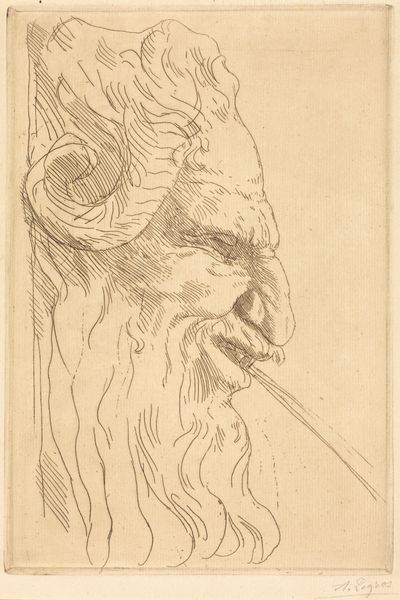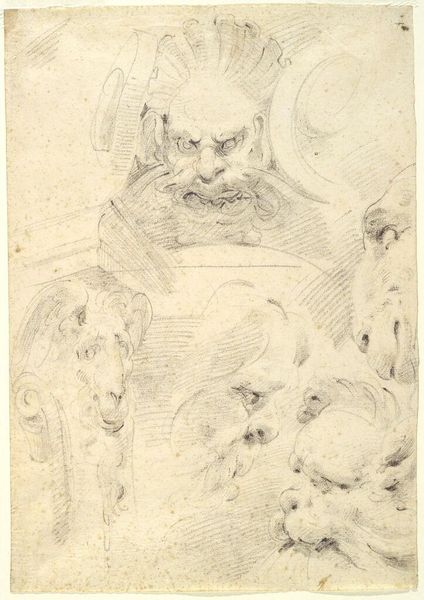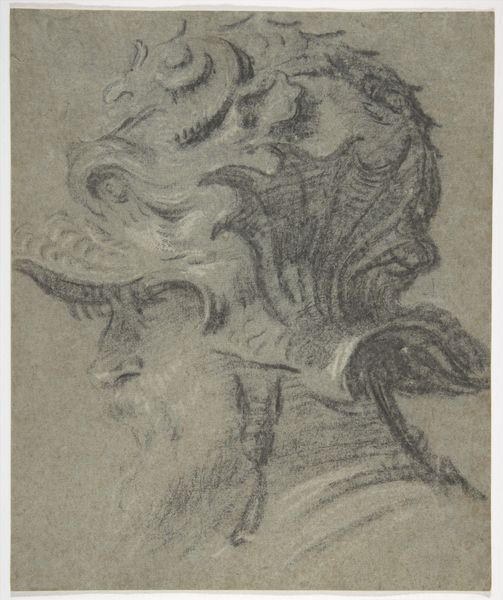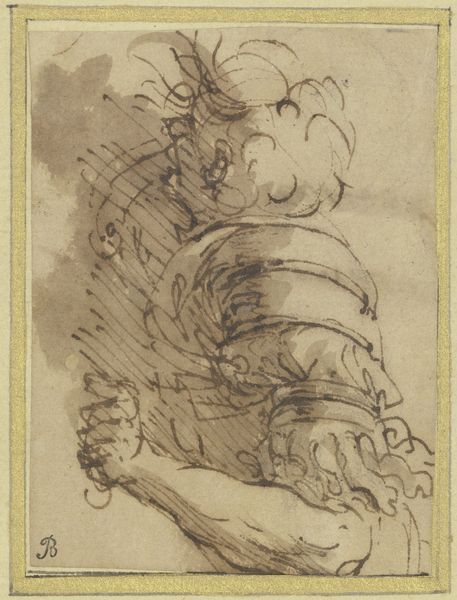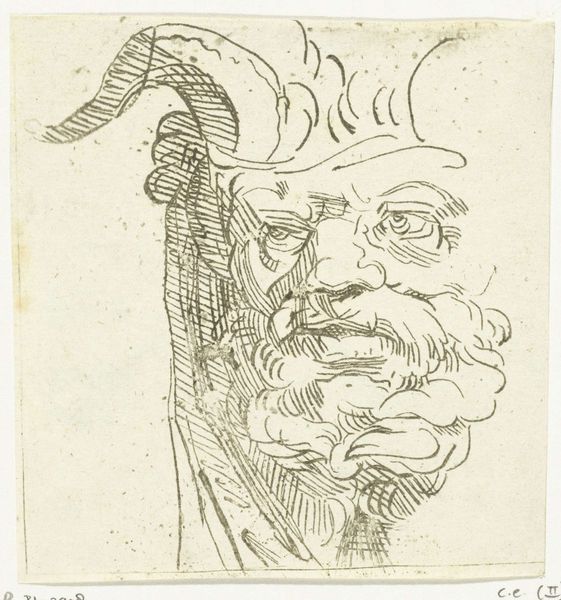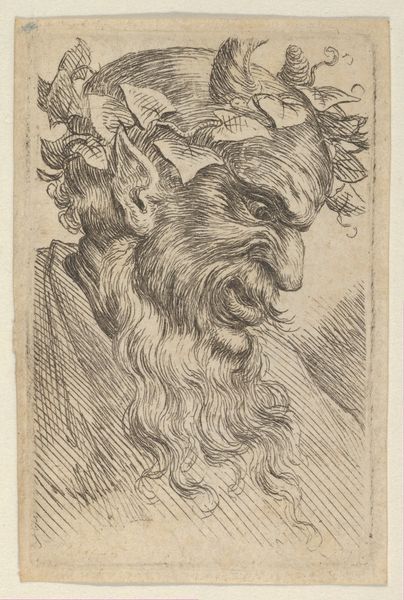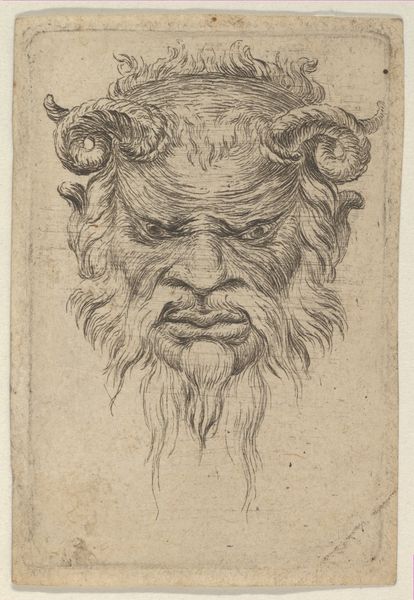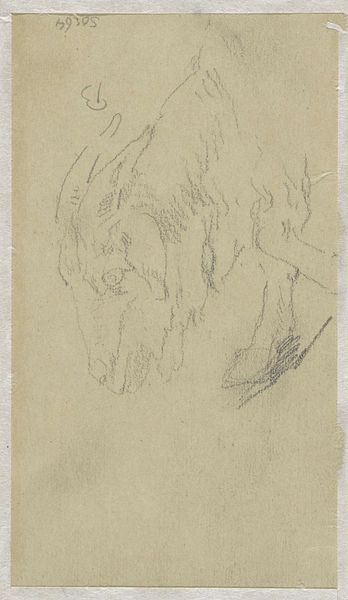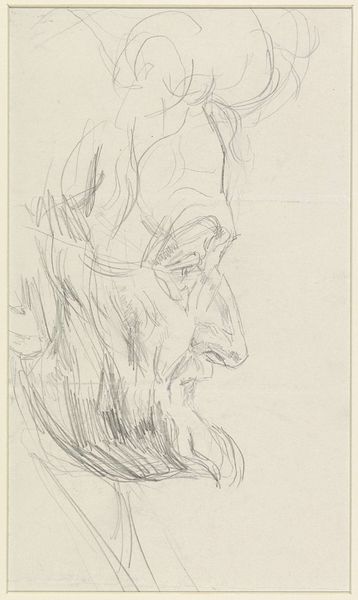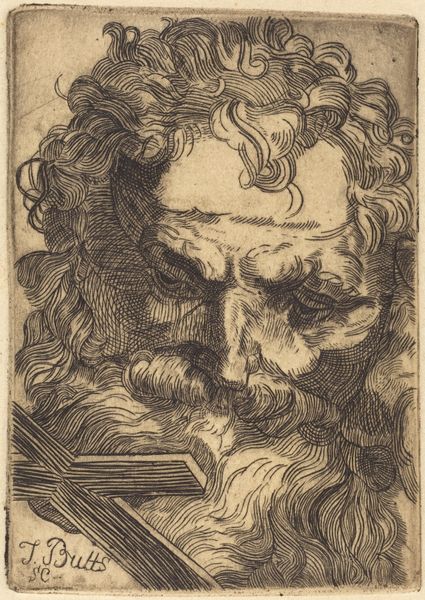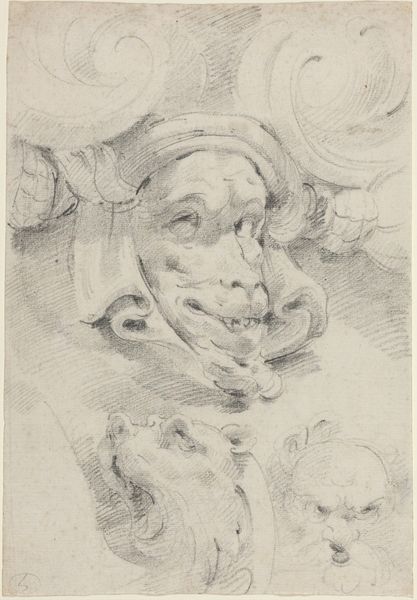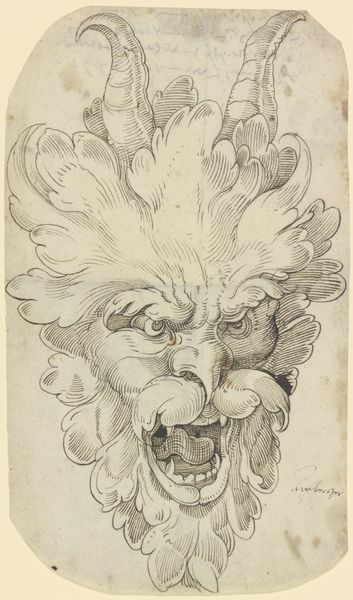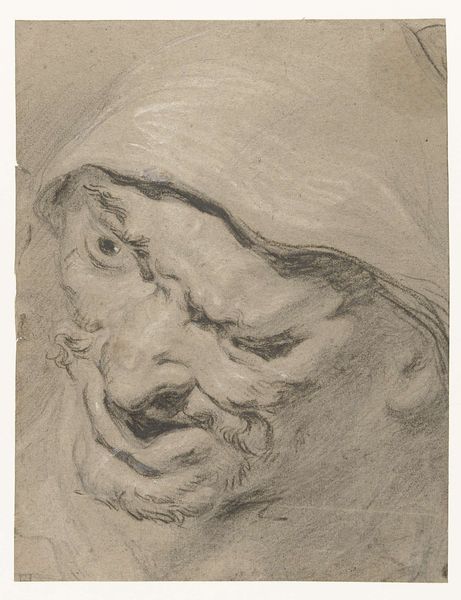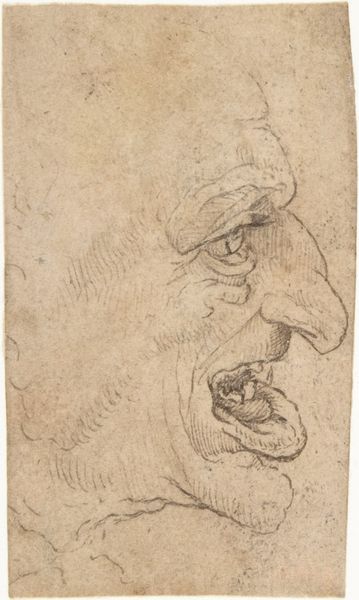
drawing, ornament, pencil
#
portrait
#
drawing
#
ornament
#
11_renaissance
#
pencil
Dimensions: 334 mm (height) x 196 mm (width) (bladmaal)
Curator: Well, this drawing, attributed to Christoph Schwarz and created sometime between 1567 and 1599, presents a compelling puzzle. It's entitled "Ornamenteret Maske," housed here at the SMK. What's your immediate reaction to it? Editor: It strikes me as both grotesque and beautiful. The face itself has a theatrical, almost comical, anger, but the surrounding ornamentation gives it a refined, decorative air. It's a strange mix of high and low. Curator: Exactly! Masks, historically, held significant socio-political weight, often used in festivals, rituals, and theatrical performances. This drawing allows us to reflect on the social function of ornamentation, particularly within the European Renaissance. Editor: So, it is less about an individual portrait and more about a cultural archetype? A representation of power or perhaps mockery through adornment? The curling, almost fluid forms around the face suggest a dynamic tension. Curator: Precisely. The ornamental elements are incredibly interesting because they appear to morph, to shift and flow almost like an extension of the wearer’s emotions. It reflects a society steeped in symbolism. Do you agree that its inherent performative quality is impossible to overlook? Editor: Absolutely. This mask, even in this preliminary drawing stage using what seems to be mostly pencil and light sketching, already suggests how one can fashion and refashion public image, something incredibly salient now, as then. What's fascinating is how even this simple medium of drawing could capture such nuanced power dynamics of display. Curator: This piece serves as a potent reminder of the complex interplay between image and identity within social and political spheres during the Renaissance. Masks continue to both reveal and conceal. Editor: A fascinating piece. It leaves me thinking about how objects, seemingly decorative, can reflect much larger anxieties and aspirations. The grotesque within the beautiful as a timeless and powerful method for representing what is fundamentally human.
Comments
No comments
Be the first to comment and join the conversation on the ultimate creative platform.
